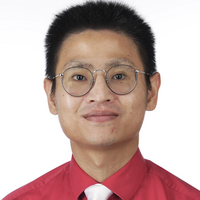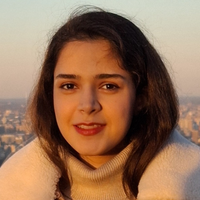
PV25 Schedule of Events
Progressive Learning for Multi-Class Brain Tissue Segmentation in Whole Slide Images
Introduction/Background: Accurate segmentation of whole slide images (WSIs) in brain histology is crucial for computational tissue analysis. Precise delineation of brain components supports clinical assessment, disease diagnosis, and research by providing structural insights into neuropathology. Manual annotation by human experts is time-consuming, making automation desirable. However, the extremely large size and hierarchical nature of WSIs present computational and modeling challenges.Methods/Design: This study addresses these challenges by evaluating and comparing two segmentation models-U-Net, a widely adopted convolutional neural network (Ronneberger et al., 2015), and Progressive Learning Network (PL-Net), an architecture designed to capture both local features and global context from multiscale image hierarchies (Mao et al., 2024). We utilized a curated and annotated dataset of 60 high-resolution WSIs of H&E-stained brain tissue, each labeled into six categories: background, gray matter, white matter, leptomeninges, superficial layers, and excluded regions. WSIs were downsampled to level two magnification (16x magnification) to balance spatial resolution and computational efficiency. Tissue regions were extracted and tiled into 256×256 patches, with background-only tiles excluded. The data was split at the slide level into training (48 slides, 23,729 tiles), validation (six slides, 2,967 tiles), and testing sets (six slides, 2,994 tiles). The same preprocessing pipeline and split strategy were applied to both models. Both U-Net and PL-Net were trained without data augmentation under identical conditions.Results: Evaluation was conducted on the test set. PL-Net consistently outperformed U-Net across all metrics. Specifically, PL-Net achieved a test accuracy of 0.91, IoU of 0.69, Dice coefficient of 0.79, and AUC of 0.97. U-Net achieved a test accuracy of 0.89, IoU of 0.67, Dice coefficient of 0.77, and AUC of 0.95.Discussion: These results highlight the effectiveness of progressive learning in segmenting complex brain structures. The superior performance of PL-Net indicates that incorporating hierarchical and multiscale features is helpful for increasing the accuracy of WSI segmentation. This approach holds promise for enhancing computational pathology workflows and supporting clinicians and researchers in analyzing large-scale brain tissue images.
Learning Objectives:
- Participants should be able to understand the challenges of segmenting brain structures in whole slide images, compare the performance of U-Net and Progressive Learning Network (PL-Net) architectures for digital pathology tasks, and recognize the value of incorporating multiscale and hierarchical features in computational models to improve accuracy in tissue segmentation.

